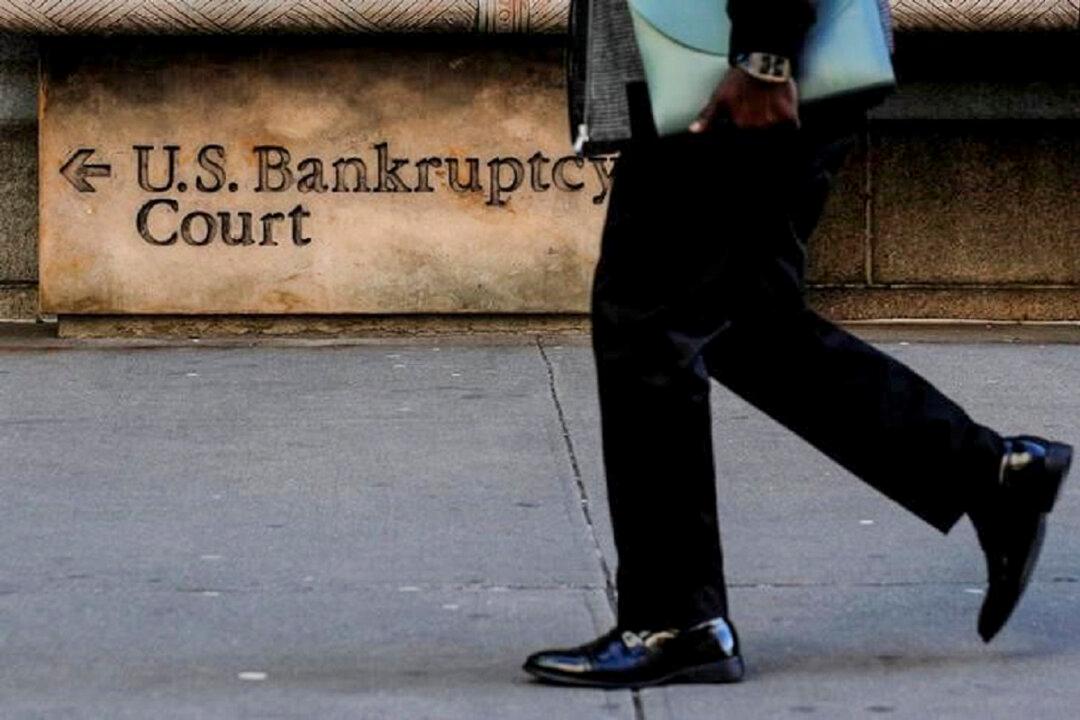Bankruptcy filings by commercial entities grew by more than a third this year as businesses struggled under an environment of high costs and interest rates, according to the American Bankruptcy Institute (ABI).
A total of 3,016 commercial Chapter 11 bankruptcies were filed in the January–June period this year, up 34 percent from last year, said a July 3 ABI press release. Small-business filings rose by 61 percent. Total bankruptcy filings rose by 15 percent, with individual filings increasing by 15 percent.
“The continued increase in bankruptcy filings reflects the growing economic strain on businesses and households,” said ABI Executive Director Amy Quackenboss.
Michael Hunter, vice president of bankruptcy data provider Epiq AACER, said he expects an increase in individual filings ahead, “especially considering the large increase in commercial filings, consumer debt levels, high interest rates, and overall increased costs with relatively flat household income.”
Despite such an environment, many executives remain positive about the future. A recent survey by professional services network Grant Thornton found that 58 percent of chief financial officers (CFOs) are optimistic about the U.S. economy, the highest in almost three years.
Three in four CFOs expect their net profits to grow over the next 12 months, with 69 percent expecting revenues to rise.
Bankruptcies and Interest Rates
According to S&P Global, there have been 275 corporate bankruptcy filings in the United States so far this year until May. This is slightly lower than the 277 filings in 2023 during the same period. However, it is the second-highest filing number during the January–May period since 2011.S&P’s bankruptcy numbers, however, only take into account large companies exceeding certain asset and liability thresholds.
Some of the largest bankruptcies so far this year involving companies with more than $1 billion in liabilities include IT firm Dynata, seafood chain Red Lobster, biotechnology company Invitae Corp., and Enviva, the world’s largest industrial biomass producer.
Companies in the consumer discretionary sector accounted for the most number of bankruptcies this year, followed by health care, industrials, consumer staples, IT, and financials.
In May, S&P Global attributed the high bankruptcy filings to interest rates.
“Fading hopes of lower interest rates are likely contributing to the increase in filings, as companies that may have held out hope for rate cuts at the beginning of the year come to terms with the reality that they will remain higher for longer,” it said.
The Fed has not announced an exact schedule for rate cuts. During the recently concluded policy-making meeting of the Federal Open Market Committee in June, Fed members suggested that if inflation remained elevated, they may even raise the rates.
Policymakers have no plans on cutting down interest rates until they have “greater confidence” that inflation is heading down to the target of 2 percent, according to minutes from the meeting.
However, officials admitted that implementing tighter monetary policies could result in “deteriorating household financial positions, especially for lower-income households,” which could end up having a “larger negative effect on economic activity than the staff anticipated.”







